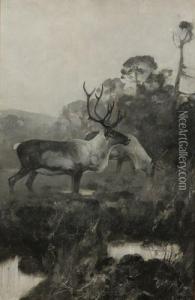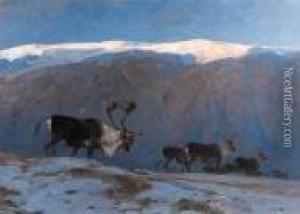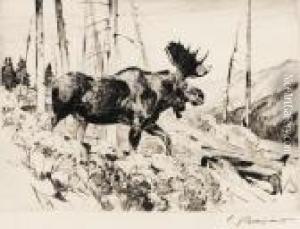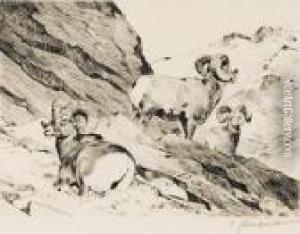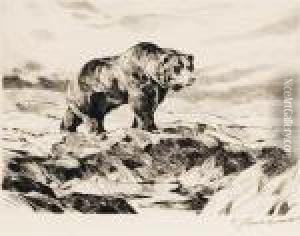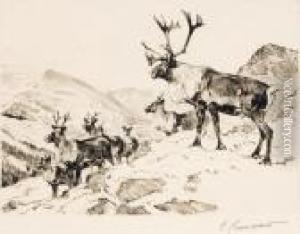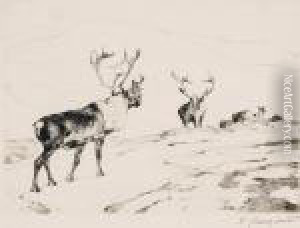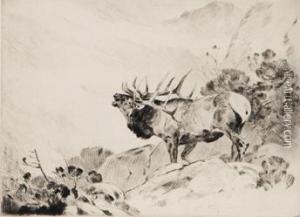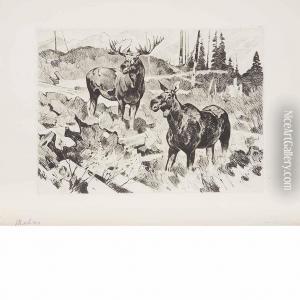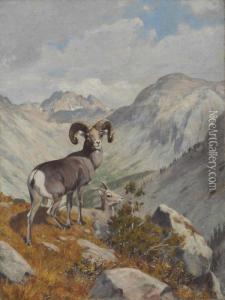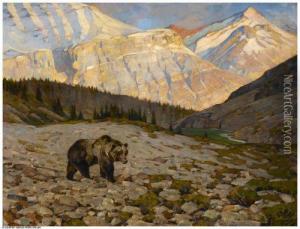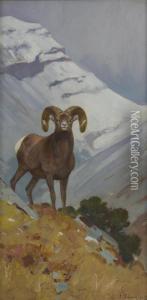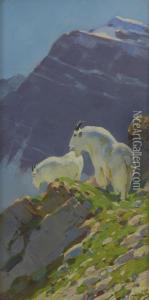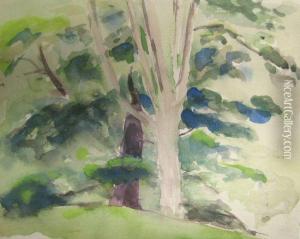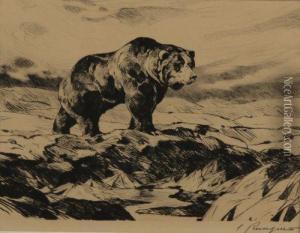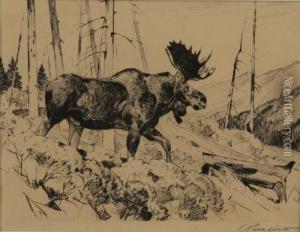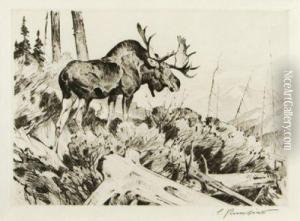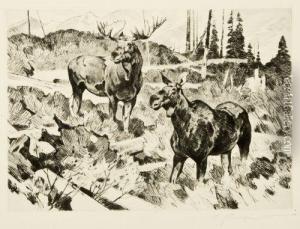Carl Clemens Moritz Rungius Paintings
Carl Clemens Moritz Rungius was a notable German-American painter, widely regarded as one of the leading wildlife artists in the early 20th century. Born on August 18, 1869, in Rixdorf (now part of Berlin), Germany, Rungius came from a family with a strong appreciation for the outdoors and hunting, which deeply influenced his artistic focus.
Rungius received his formal art education at the Berlin Art Academy, where he honed his skills in painting and developed a keen interest in portraying animals in their natural habitat. His talent for capturing the vitality and essence of wildlife became apparent early on in his career.
In 1894, Rungius made his first trip to the United States for a hunting trip to Wyoming. This experience had a profound impact on him, and he found great inspiration in the vast landscapes and the abundance of North American wildlife. After several years of dividing his time between Germany and the United States, Rungius immigrated to America in 1896, where he would eventually settle and continue to develop his career.
Rungius was particularly fascinated by the rugged wilderness of the American West and the Canadian Rockies. He often ventured into these remote areas to observe and sketch animals in their natural environments. These field studies were crucial to his work, as they allowed him to depict his subjects with scientific accuracy and artistic sensitivity.
Throughout his career, Rungius exhibited his work in various prestigious venues, including the National Academy of Design in New York and the American Museum of Natural History. His paintings were celebrated for their realism and dynamic compositions, which brought viewers face-to-face with the majesty of North American wildlife.
Rungius was an active member of the art community and was a founding member of the Bronx Zoo-based Society of Animal Artists. His legacy as a wildlife artist is marked by his influence on future generations of artists and his contributions to the conservation movement, as his art raised public awareness about the beauty and fragility of wilderness areas.
Carl Rungius continued to paint until his death on June 21, 1959. Today, his work is held in high regard and can be found in numerous public and private collections, including the National Museum of Wildlife Art in Jackson Hole, Wyoming, which houses the largest public collection of his paintings and sketches.
